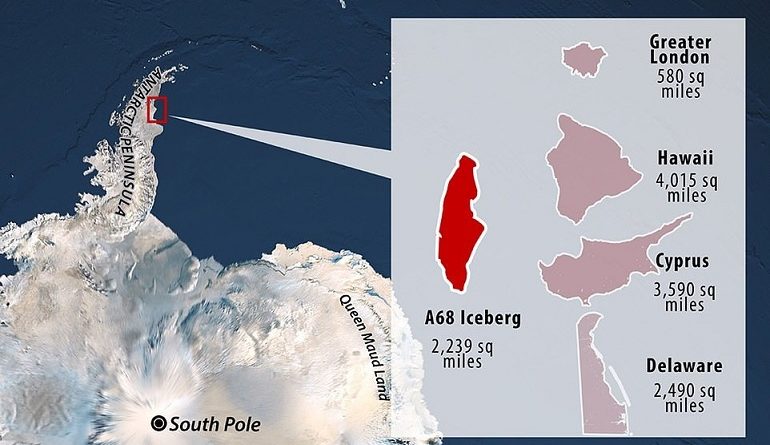World’s Largest Iceberg Headed for Open Water
The biggest iceberg on Earth is about to enter the open ocean.
Referred to as colossus iceberg A68, the enormous ice block, which weighs one trillion tonnes, broke off Antarctica in 2017 and is only just heading for the Southern Ocean’s rough waters.
When it calved, the berg had an area close to 6,000 sq km (2,300 sq mi) and has lost very little of its bulk over the past two and a half years. It’s being carried north by currents and in the last year has started to accelerate in its journey northwards towards South Georgia, an island in the southern Atlantic Ocean.

The berg broke away due to iceberg calving – the breaking away of masses of ice from the edge of a glacier.
Rising waters and air temperatures caused by global warming are triggering instabilities along the coasts of Antarctica and Greenland, accelerating melting and increasing the rates of calving.
However, scientists are hopeful that the berg breaks down as it travels further towards the equator and reaches choppier waters.
Twenty years ago, an iceberg nearly twice the size of A68 broke off from the Rose ice shelf and drifted north towards Great Britain’s South Georgia Islands, which are at 54 degrees south. The biggest ever recorded iceberg in the modern era was the 11,000-sq-km block called B15, is now less than one-fifth of its original size and it’s halfway between the South Sandwich Islands and South Georgia.
Icebergs like A68 and B15 need constant monitoring since they pose risks to ships.
While researchers watch A68’s movement, they are also keeping a close eye on two other icebergs poised to break free from the ice shelf. One, which is half the size of New York City, is riven with cracks and will likely crumble once it breaks free.



